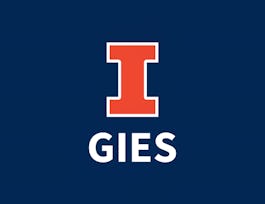Developing a revolutionary design or product or software often becomes an all-consuming pursuit in industry. Yet, many gifted engineers and technologists are eventually bewildered to discover, only too late, that their innovative product is wholly insufficient. A great design accomplishes nothing if it fails to address critical needs and the only means of aligning those is a deep understanding of the consumer or business customer. Fully 94% of executives admit that their organizations fail to truly understand the customer. They are, strategically, running full-steam in complete darkness.



Market Research and Analysis for Tech Industries
This course is part of Marketing Strategy for Engineers and Technologists Specialization

Instructor: John Svoboda
Sponsored by IEM UEM Group
1,612 already enrolled
Recommended experience
What you'll learn
Manage market research programs.
Interpret consumer and business customer behaviors.
Segment markets strategically.
Oversee the development of branding and logos.
Details to know

Add to your LinkedIn profile
7 assignments
See how employees at top companies are mastering in-demand skills

Build your subject-matter expertise
- Learn new concepts from industry experts
- Gain a foundational understanding of a subject or tool
- Develop job-relevant skills with hands-on projects
- Earn a shareable career certificate


Earn a career certificate
Add this credential to your LinkedIn profile, resume, or CV
Share it on social media and in your performance review

There are 6 modules in this course
Our first objective is to demonstrate to (often skeptical) engineers that technologies and innovations do NOT sell themselves. To consumers or to businesses. The media tends to cover only the exceptional, glamorous companies that floated to Unicorn status (Billion-dollar valuation) seemingly with ease. The other 99% of successful Tech deployments have required strategic marketing programs to get there. We explain how Marketing is far broader and more diverse a function than just advertising: Essentially all companies do marketing even if they do not advertise (See Tesla). Then we get into the value and mechanics of the guiding project for the term, the Marketing PLAN.
What's included
4 videos9 readings1 assignment
Now we will cover the common pace and patterns of adoption of novel technologies into industries and consumer markets, punctuated by examples of a couple of famous companies. We will see how many tech firms continue to repeat the mistakes of their predecessors and assume that the enthusiastic early buyers are like the later ones, the ones you need to make a profit. We will learn to apply two analytical models; The Technology Adoption Life Cycle and Roger's Technology Diffusion metric. Finally we get into the value and mechanics of our guiding project for the term, the Marketing PLAN.
What's included
5 videos3 readings1 assignment
Now we analyze exactly how consumers and businesses make buying decisions. What are specific influences and processes and apply the Decision-Making Unit approach to define which parties have influence on these decisions. The we distinguish between high complexity/cost/risk purchase decision processes and those that are simple/cheap/quick. Finally we discuss what Client characteristics make for an engaging and straightforward PLAN process.
What's included
4 videos8 readings1 assignment
Now we learn about businesses as customers, the nature of these markets and how they compare and contrast with consumer markets. Next we take a brief look at the burgeoning filed of Behavioral Economics (where psychology and microeconomics intersect) and how its lenses can be useful here. We learn to develop a deep understanding of the customer through a rich profile called a Persona.
What's included
4 videos7 readings2 assignments
We analyze types and charactersitcs of Market Research sources, first Primary, that collected for and explicityly applicable to THIS purpose/project. Then we learn the mechanics of creating the most-used type of primary market research, the Survey. Next we learn about secondary research, that collected for broader use but nevertheless quite valuable on the program at hand. The forms of research collection vary greatly in cost, time, quality and reliability of outputs, external validity, etc. Lastly we learn the practical collection of cost-free secondary research for your PLAN or any cash-constrained business.
What's included
5 videos9 readings1 assignment
Now we learn to convert the raw outputs of research into useful data. The next analytical approach is choosing and applying effective means of Segmentation, subdividing your whole customer field into more useful and specific groups. Then we discuss how to strategically focus resources on the most promising subsets and then an advanced approach to same, Conjoint Analysis.
What's included
5 videos9 readings1 assignment1 peer review
Instructor

Offered by
Why people choose Coursera for their career




Recommended if you're interested in Business

University of Colorado System

Fundação Instituto de Administração

University of Colorado System

University of Illinois Urbana-Champaign

Open new doors with Coursera Plus
Unlimited access to 10,000+ world-class courses, hands-on projects, and job-ready certificate programs - all included in your subscription
Advance your career with an online degree
Earn a degree from world-class universities - 100% online
Join over 3,400 global companies that choose Coursera for Business
Upskill your employees to excel in the digital economy


